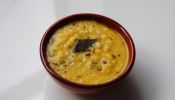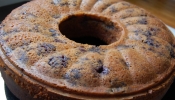In Portugal the national food is bacalhau, salt cod, there are hundreds of recipes and the older generations would happily eat it once a week if not more. It’s not a cheap food anymore, what was once a way of preserving fish through necessity it now commands a good price which is why when buying bolinhos de bacalhau, pataniscas or pasteis de bacalhau in cafes, restaurants, they’ll skimp on the quantity of the cod. Salting your own cod for a few days is not the same as this cod because you have to completely dehydrate the fish in order to change the texture of it, it’s not simply a matter of firming up the fish.
I can not understand how around the world the most famous dish of salt cod is Brandade de Morue, maybe because it’s French it’s got to be good right? There is so much you can do with the texture of this fish and making into baby paste is not a dish I would turn my stove on for. I loathe salt cod boiled, which is the traditional way of serving it on Christmas Eve dinner, and I’m not alone in my generation. Salt cod is the perfect foil for onions, tomatoes, olive oil, olives, baked with these or stewed and made into fish pie, but cream based fish pies are also popular. It’s also really good fried mixed with chips and then scrambled with onions,eggs, parsley and olives, I know it sounds odd but it’s one of those dishes that is best eaten to be proven how morish it is.
These cakes are usually served at room temperature, I love them as they come out of the fryer, they also make perfect snack/picnic food. I love these but Bikerboy doesn’t, he would much rather eat pasteis de bacalhau which my mother makes, mini turnovers, using a choux pastry covered in breadcrumb and fried, very time-consuming and not the sort of thing I’m likely to do, much to his disappointment. The other very popular delicious quick way, quicker than these here is pataniscas, a fritter.
Buying
It smells when you get it and when you hydrated it and also if you boil it but it doesn’t smell as strong if cooking it in other ways. There is good and bad quality salt cold, I would buy some from a Portuguese or Spanish deli as in my experience they tend to be fussier on the quality of it. I wouldn’t touch those sad thin little pieces I’ve seen selling in the world food section in supermarkets, leaves those alone.
On buying salt cold you want to go for the thick parts like the ones here cut from the centre of the cod, when they hydrate they produce thick chunks of cod with great texture, no small bones and easier to flake for example. You may not always have a choice in how you buy it as it’s normal in a Portuguese shop for it be sold by the entice cod if dehydrated like this. You can buy cut pieces already soaked in the freezer, also means you can skip the hassle of soaking.
Soaking
The soaking can take anything from 2-3 days depending on the thickness of the pieces and how often you change the water.
My advice is allow 3 days. Soak in a bucket filled with cold water and change the water every 12hrs. Keep it somewhere cold, easy in the winter kept in a garage or outside the kitchen door (with a heavy object covering it to keep cats out). In hot weather you’ll find it will take less time to hydrate, keep it indoors away from sun.
After the second day pinch some of the cod and taste it, it should not taste salty, just in case you’re worried you can eat raw hydrated cod, I had a delicious starter with raw cod and extra virgin olive oil in Lisbon four years ago.
Once soaked they can be kept in the freezer ready for using.
The two thick pieces above were wrapped up and sent to my blogger friend Luc in the Netherlands. Which meant I was left with the scrappier bits for my pot! The taste is the same only means there’s more work on my part to debone it.
Bolinhos de Bacalhau – Salt Cod Fish Cakes
These quantities below are a guide, every household will make it in proportions to what they have and personal preference, but the rules are if you have a heavier dose of salt cod they they’ll be chewier texture, if you’re heavy on the egg they be liquidy in the mixture but will be puffier as a result, if you add too much potato they’ll taste of potato.
The fish cakes can be shaped round or into quenelles like here. The recipe below is for traditional ones like the top photograph which were made by my mother 2 years ago. The step-by-step photos are ones I made December 2011 where I added some chilli, teaspoon lemon zest, coriander, parsley, basil. Experiment using your own flavouring but be aware you can easily overpower the cod.
- 300g / 10 oz of salt cod (hydrated weight) see soaking details above
- 500g / 1 lb potatoes cooked and mash without any butter or milk added, you want a dry mixture
- 1 large onion finely chopped
- parsley a handful chopped about 3 tablespoons
- 2-3 medium eggs lightly beaten with a fork, start with 2 eggs see if there’s enough moisture to bind the mixture into cakes
- Salt, if your cod has been really washed out of all salt then you’ll need to season these cakes as per normal, taste some once all mixed and decided
- Flavourless Vegetable oil for deep frying like sunflower.
I don’t remember how many this mixture makes now, but I think you’ll get 20 if not more…come back to me and let me know.
Boil the cod, you can just boil the cod without any flavourings but I’m so use to poaching things with flavourings. The cod won’t take long to cook especially if you have thinner pieces.
Once it comes to the boil keep an eye and test a thick piece after 1-2 minutes of simmering, they should stop being translucent and yield apart when probed with a fork.
Remove the pieces from the water and let them cool enough to handle.
Skin and de-bone.
Shredding the Cod
Now you have removed the skin and bones time to shred the fish.
The traditional way to do this is as I’ve done it below, using a tea towel, this ensures they shred nicely but also it squeezes excess water out of it, and helps you find any little bones hiding.
Get yourself a tea towel.
Place the cod in the middle
Gather the towel and hold it securely, and then press the cod squeezing with the palm of your hands. While doing this rock the cod back and forwards hard on the surface, this movement will be shredding it inside.
Check that you have done it long enough, you may have to do it again, you want the texture of the cod to be in little shreds, clumping together with most of large pieces broken down.
As you transfer the cod into a dish use you fingers to feel through bits of it to feel for small bones.
Cod is now ready for cooking, can be prepare to this stage and kept in the fridge tightly covered the day before.
The best way to deal with the tea towel is to put into a bowl and pour boiling water from the kettle over it to cover it, let it cool it will remove the large bits and then you can put into your washing machine.
Me being extra careful washing everything down because of allergy kid.
Now you can mix all the ingredients together but add the egg one at a time to make sure you get the consistency you want, should be binding together nicely but not very wet.
Again you can have the mixture ready to this stage the day before using it in the fridge.
Easiest way to shape them is the quenelle especially if you have made the mixture a tad wet.
Good Frying
It takes practice to fry anything to perfection and not making these often I always get it wrong in the beginning. Frying it too quickly like below will burn them too fast on the outside and produce a raw mixture inside.
They should not be like this inside still wet with raw parts of egg.
Eventually I worked out the temperature was good at around 160C.
I also notice how the bubbles in the oil changed if I had oil too hot. See the photo below where the oil is fiercely frying and creating small bubbles, well that’s too hot.
When I turned down the temperature and added the fish cakes into the correct temperature the bubbles in the oil were rather larger as the photo below shows.
By the time they’re nice and golden on the outside they should be perfectly cooked inside.
Cooked inside.









































{ 14 comments… read them below or add one }
Beautiful! i love the teatowel sequence, I must try that the next time I make these. Is that a family method? Hand skills are so precious and get lost if they are not passed down. My mother was a terrible cook, put very good at peeking things, like prawns and opening shellfish – guess it’s all about motivation.
Your captcha has just returned me three incorrect responses, one last try.
hi Joanna – no it’s not particular to my family it’s how everyone I know does them or did it when I was younger, makes me wonder what method they use now as things tend to change!
Thanks for letting me know I can add it to my list of things to change soon
In the Caribbean, where I live, these are very popular, practically a national dish, brought by French and Portuguese settlers probably back in the early 1800s. I make mine just as you have done with mashed potatoes but most people make them with a wheat flour batter. Yummy with a hot pepper dipping sauce : ))
Hi Vonnie – That’s interesting to hear that wheat is used to make fishcakes, we use wheat when making the flat fritters…
These look absolutely incredible! I once brought some salt cod back from the markets in Madrid because I love it so much – not recommended on a hot August day! – but I’ve never tried to make fritters. With this step-by-step guide and gorgeous photos there’s no way I’m not going to now though. Some recipes I bookmark and never bother to make, but this is going straight to the top of the list.
Hi, I know I would like these as I love the West Indian salt cod patties. But it is hard to find good ones. I have also tried and loved salt cod fritters, made by a Guyanese cook at a takeaway near me. They have chili and corn in them. She also makes a lovely salt cod curry.
You can’t go wrong with fried fish Littleloaf
That sounds lovely Catherine adding the corn to them and yes it would also make good curry because of its good texture.
hat do I say? Such a lovely lovely piece. Might even start eating Salt Cod again! Mxx
Brandade is really awesome, but yours look great. We make these here at work, but give them the unsavoury name of fish cakes, must be some Anglo thing?
Michael I promise never to cook you bacalhau! But you did remind me when you told you liked duck rice I should post a recipe, it’s very popular over there.
Bolinhos de Bacalhau is more of an interesting name Jeremy, don’t you think?
Thank you so much for sharing all these wonderful recipes with us. I’ve been looking for this recipes for I don’t how long and I finally found it, thank you. I tried the yogurt cake for my daughter 1 st birthday and it was great.
hi Sonia – yes the yoghurt cake is very popular!